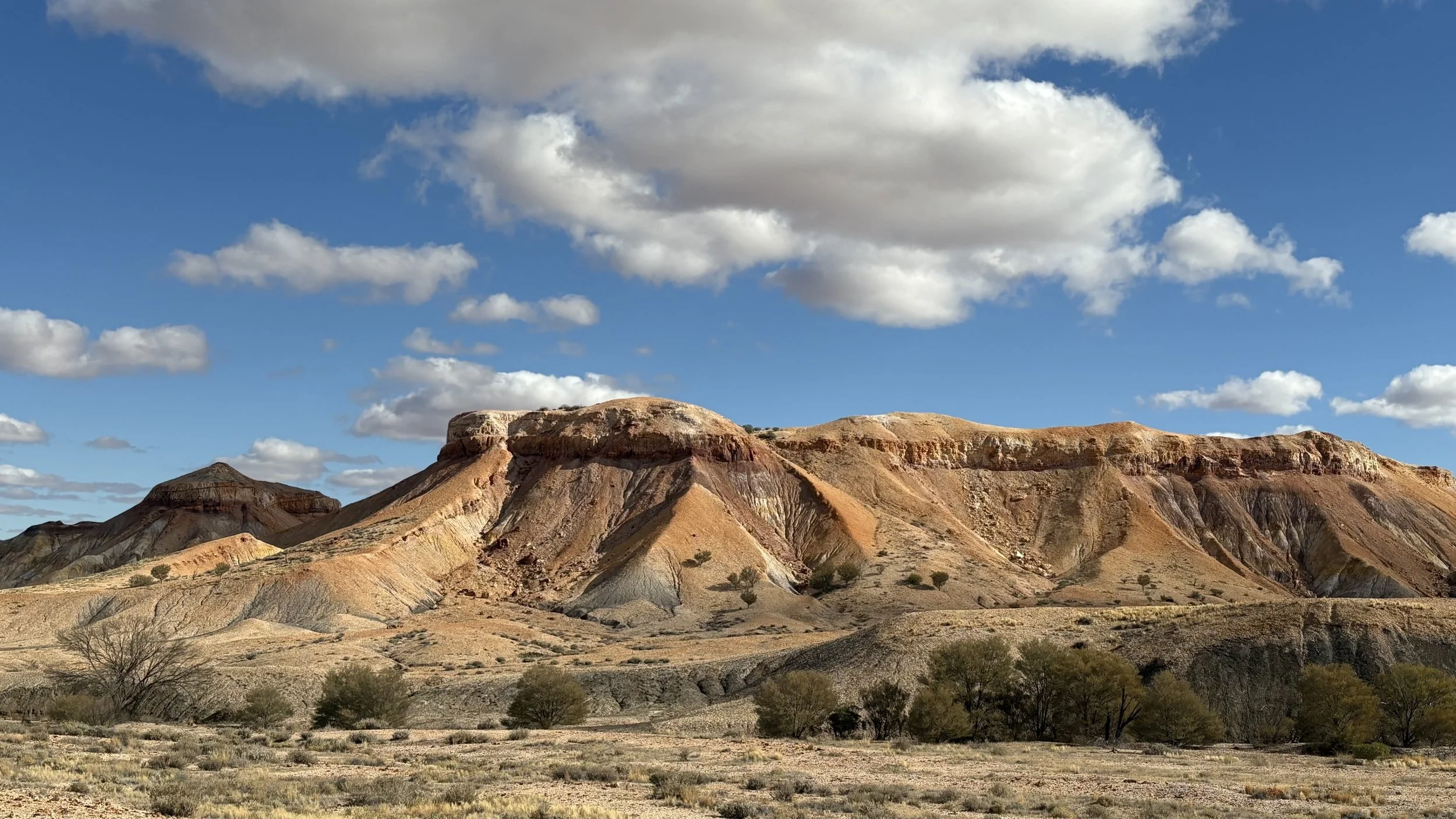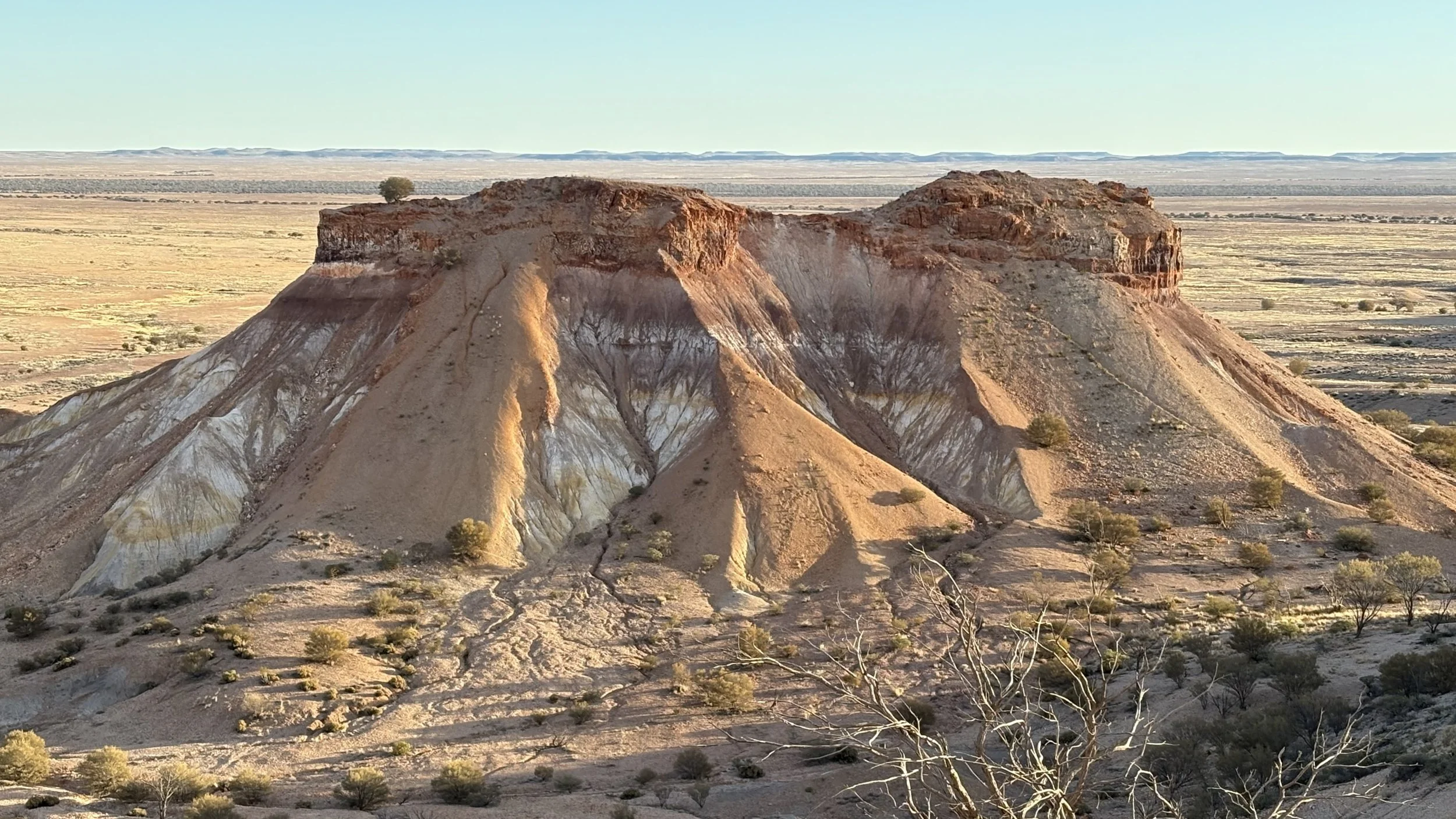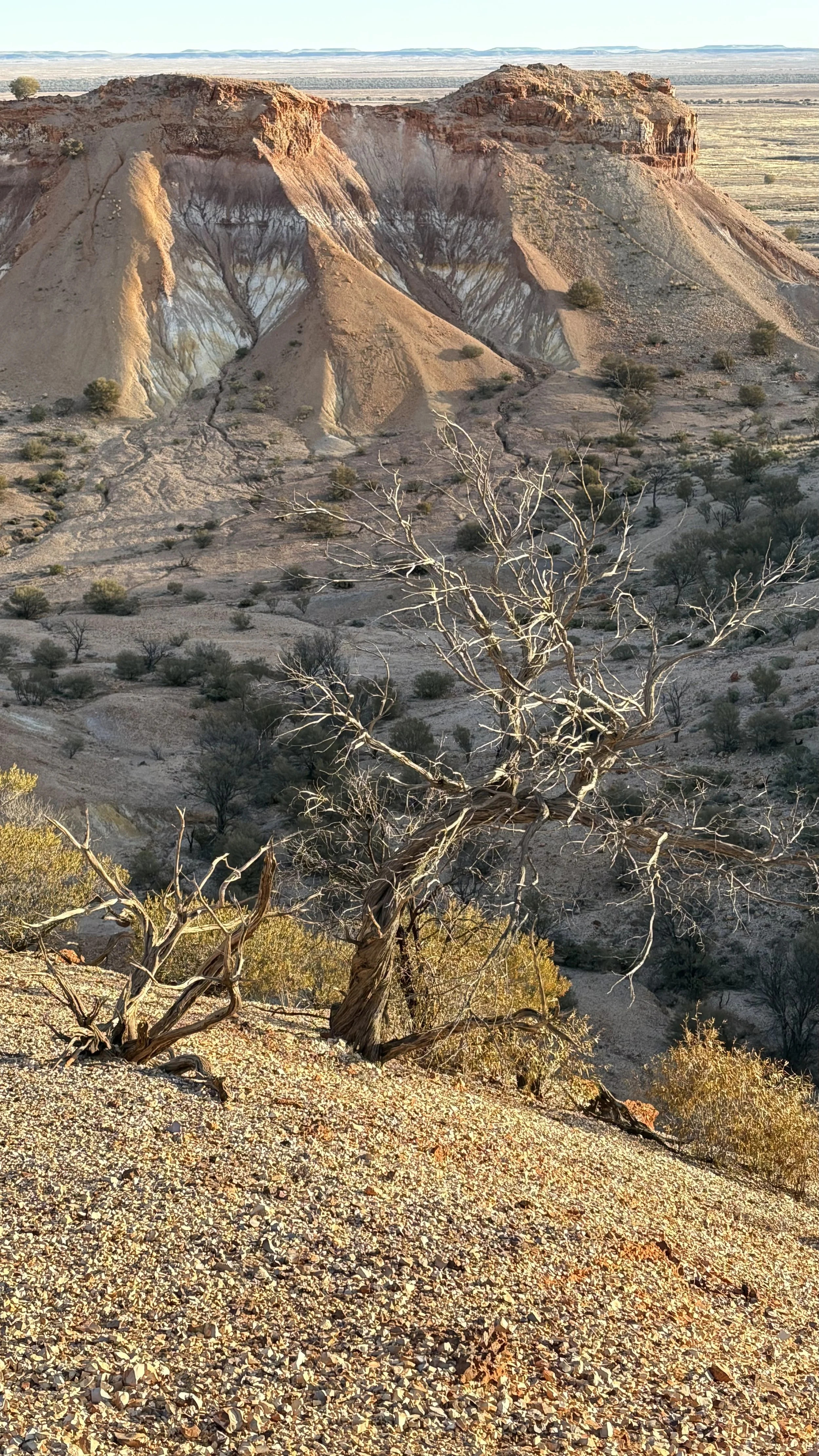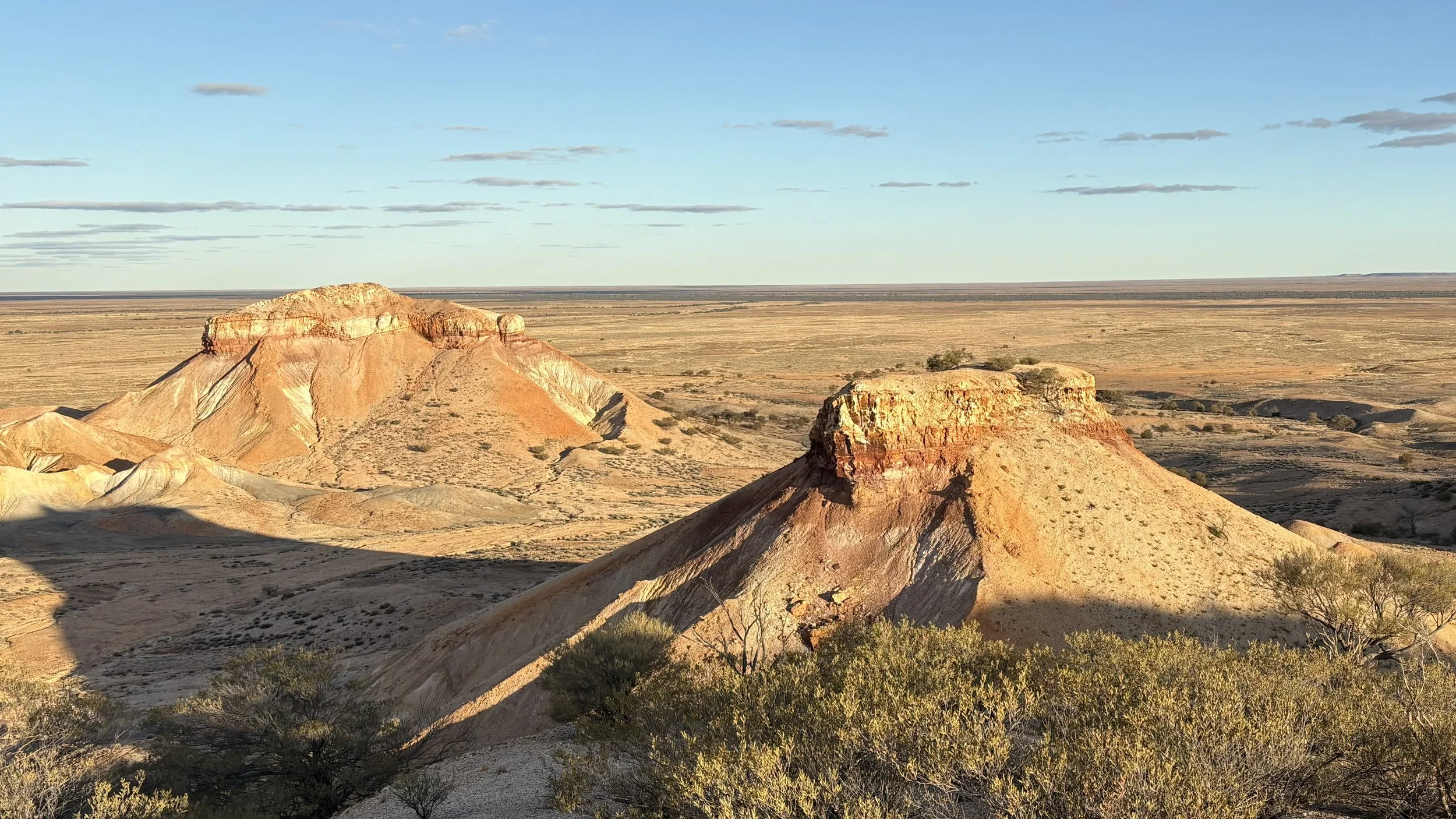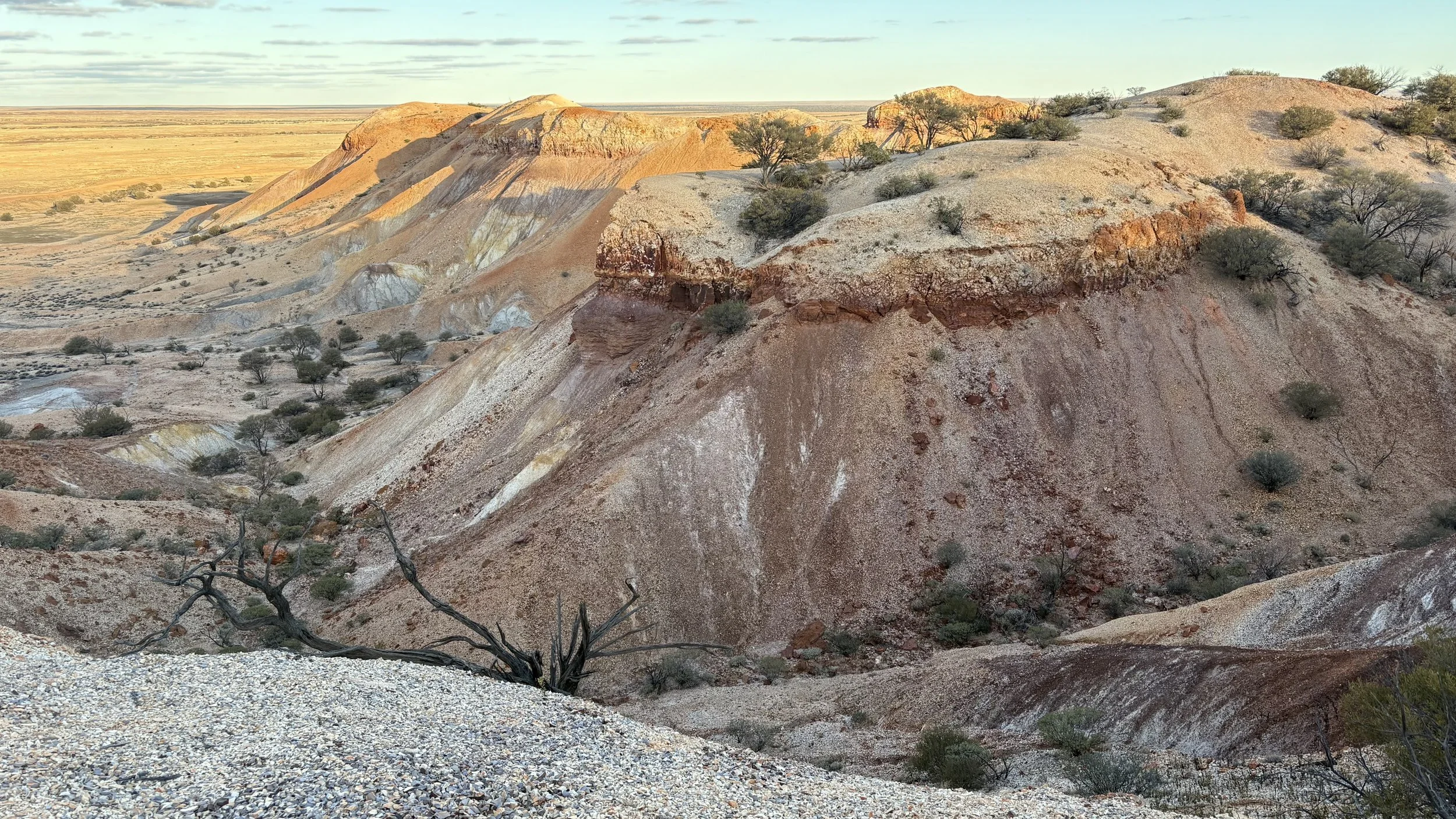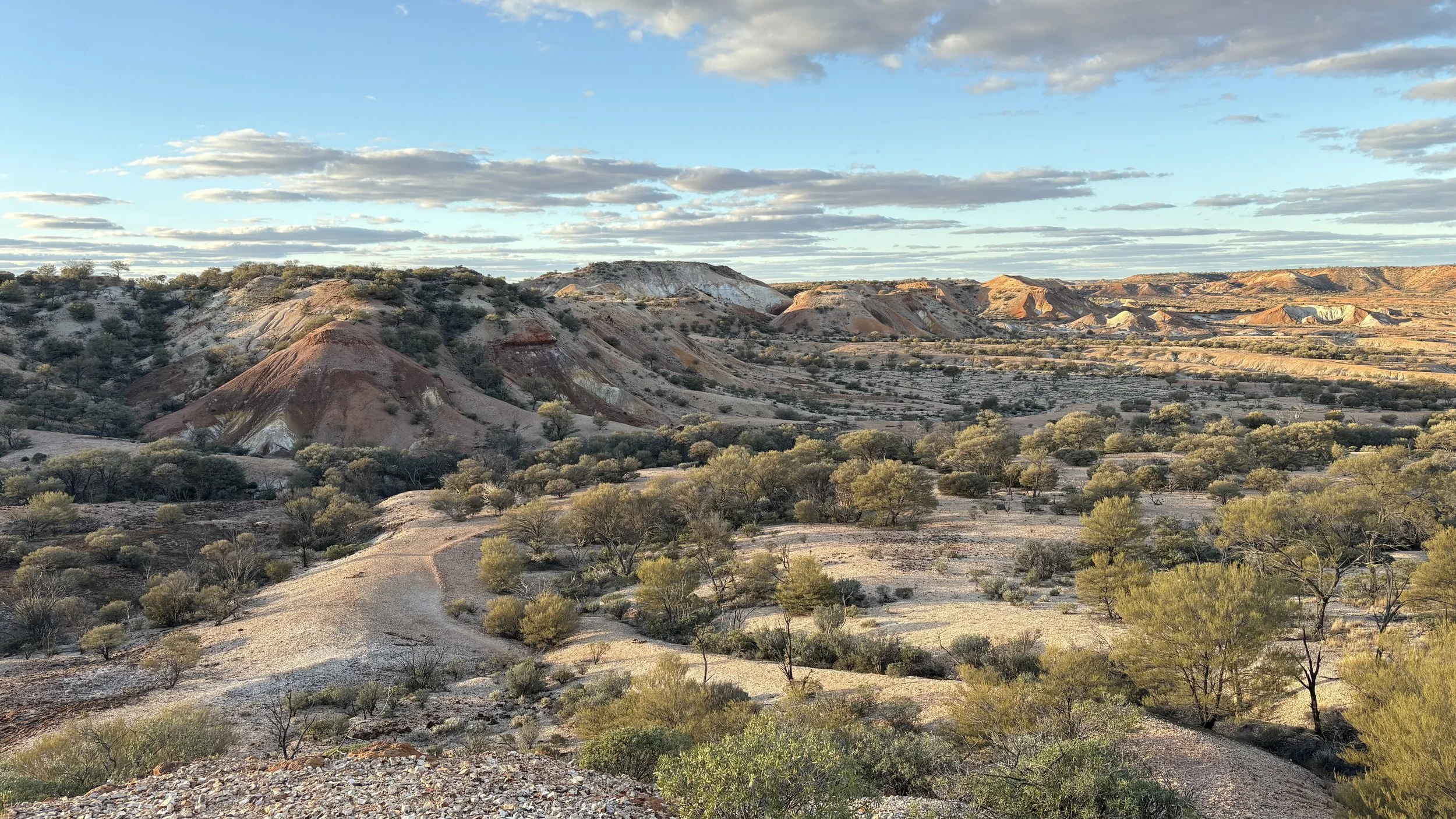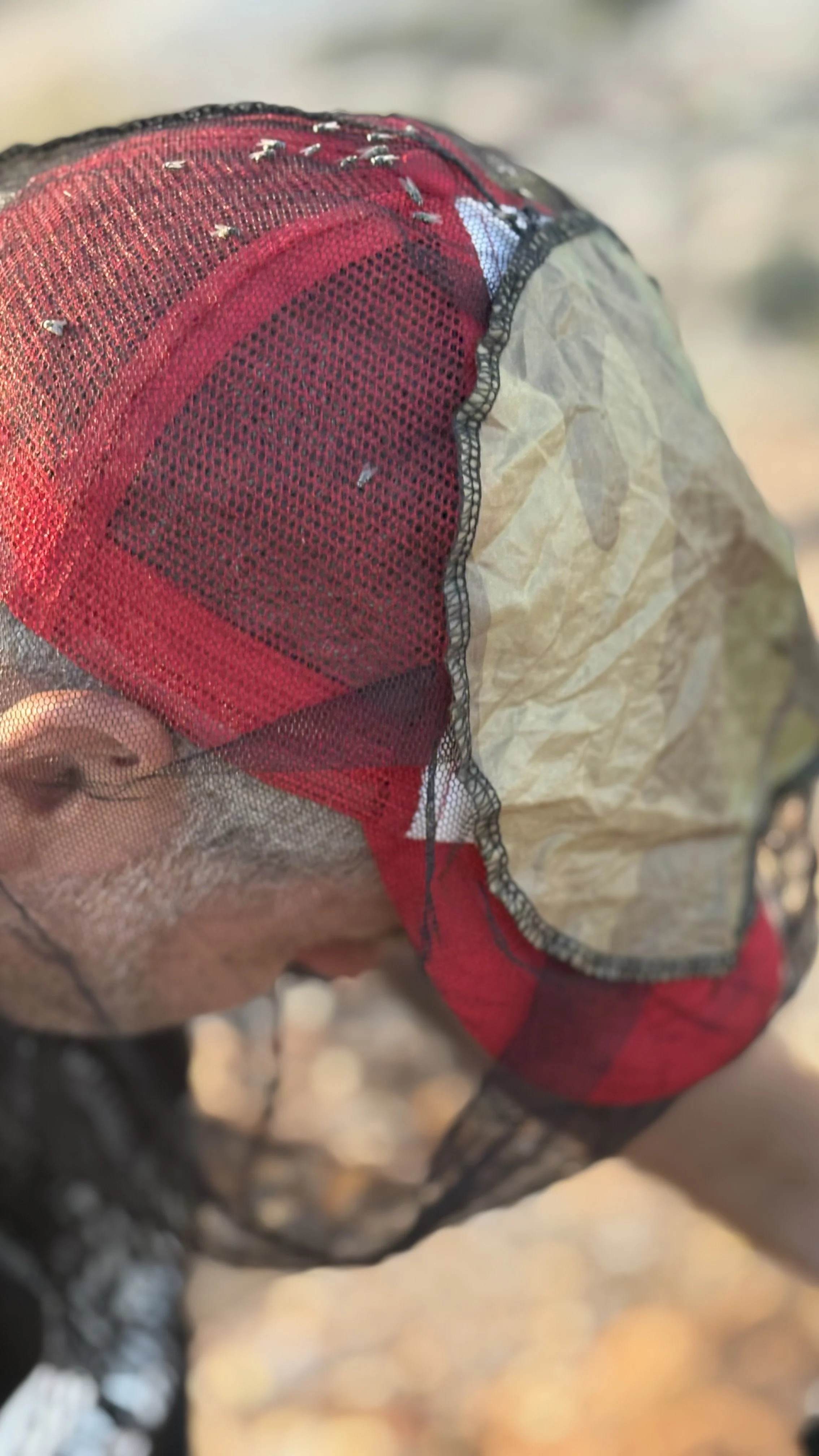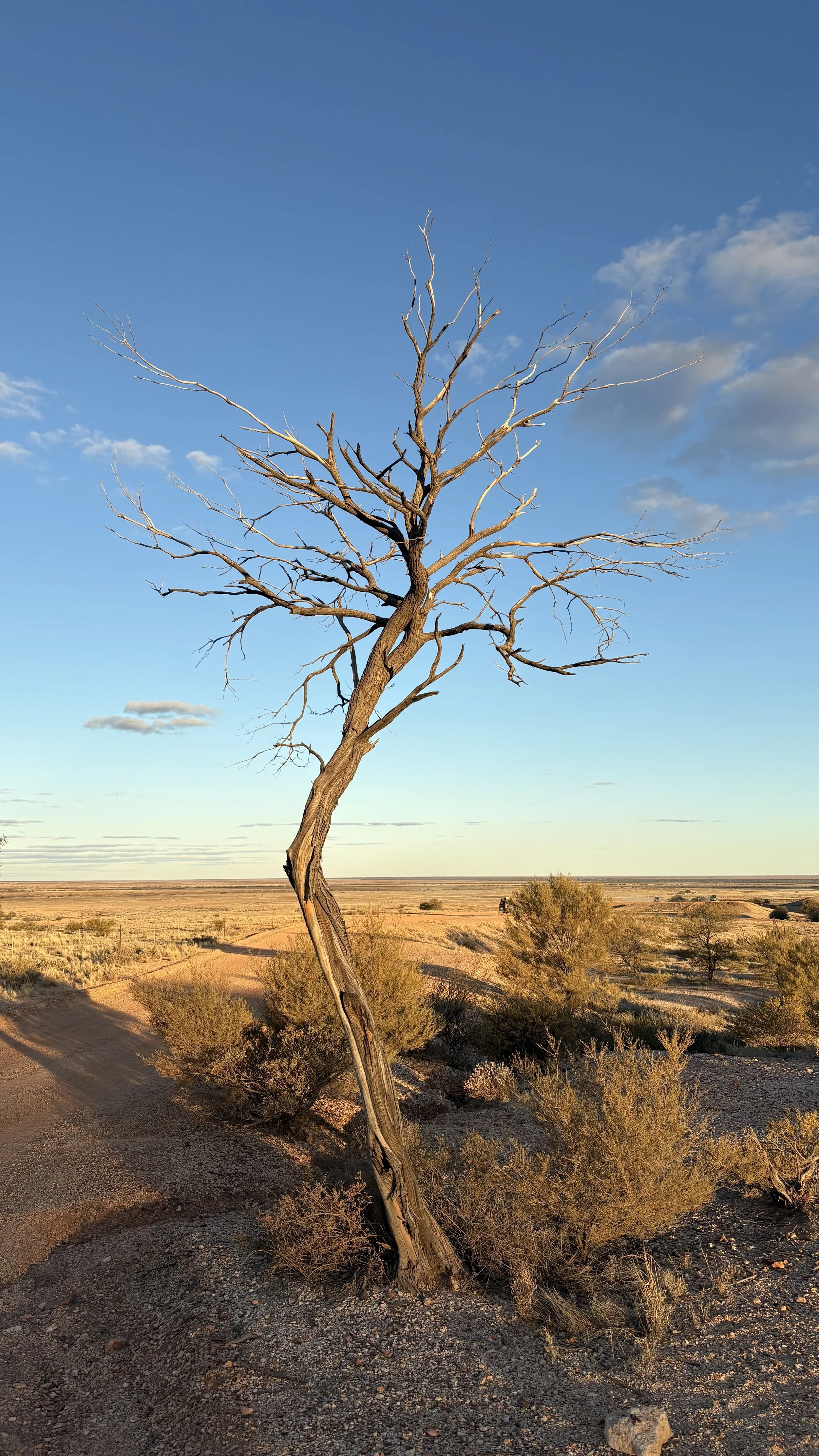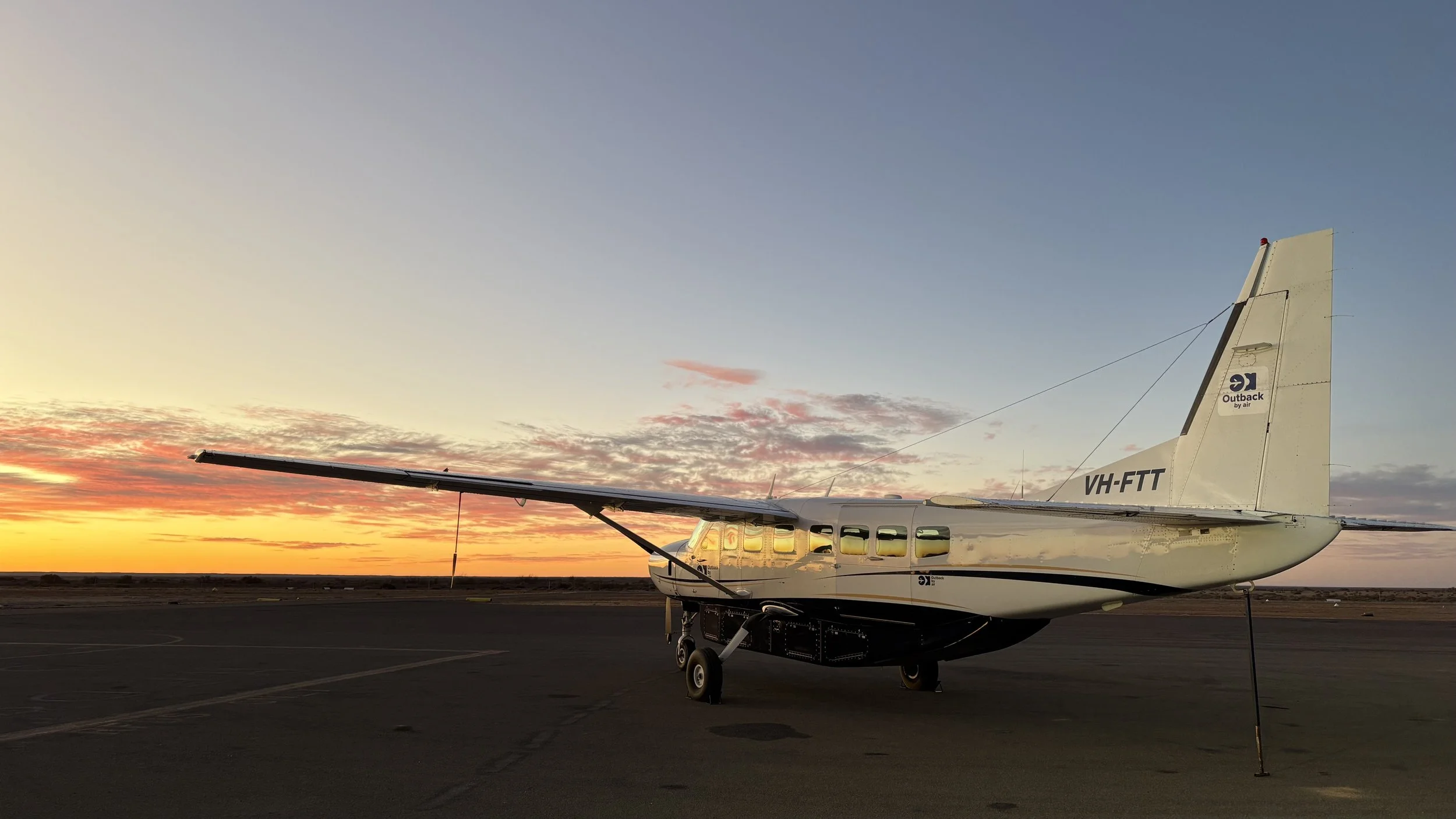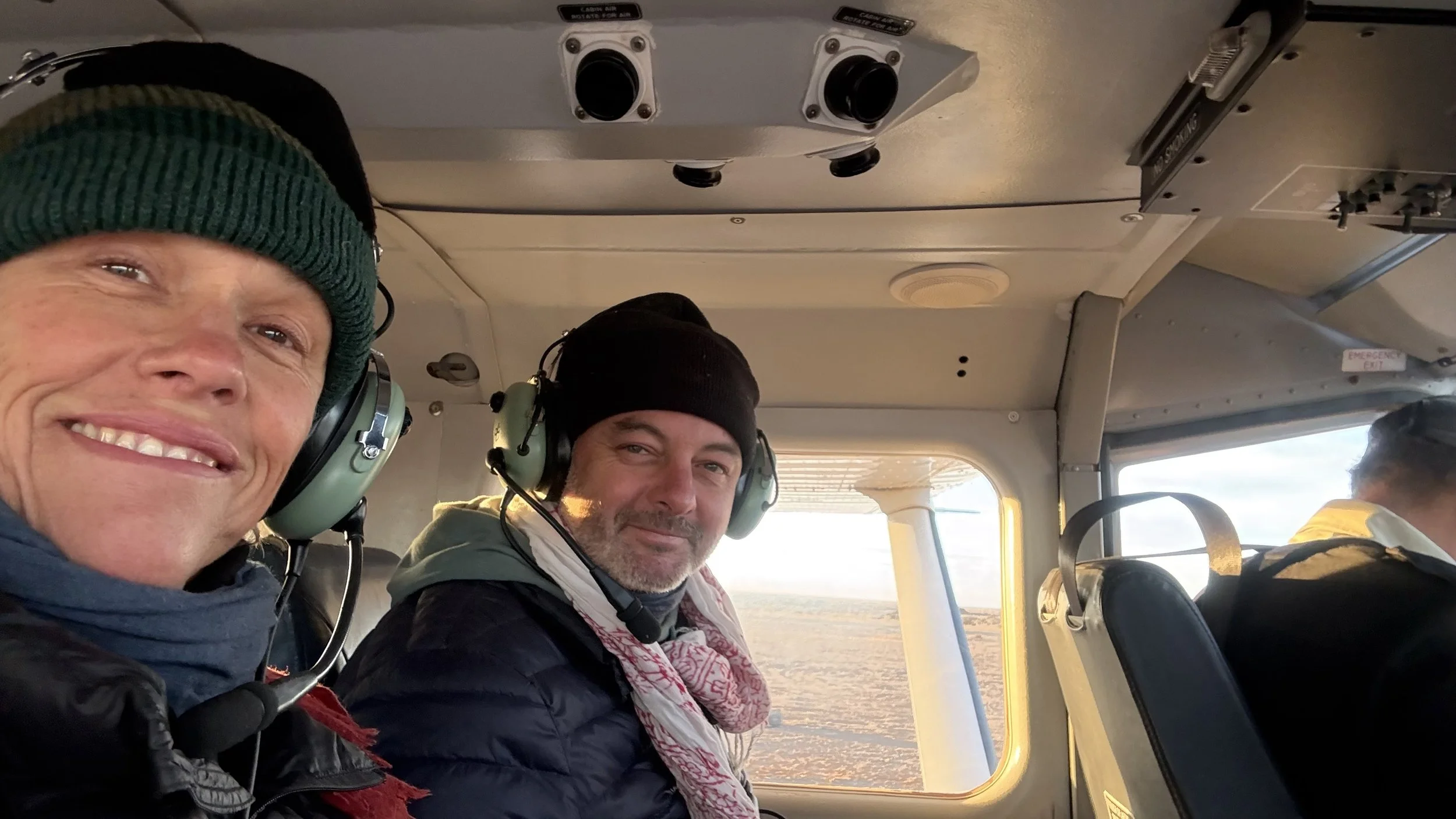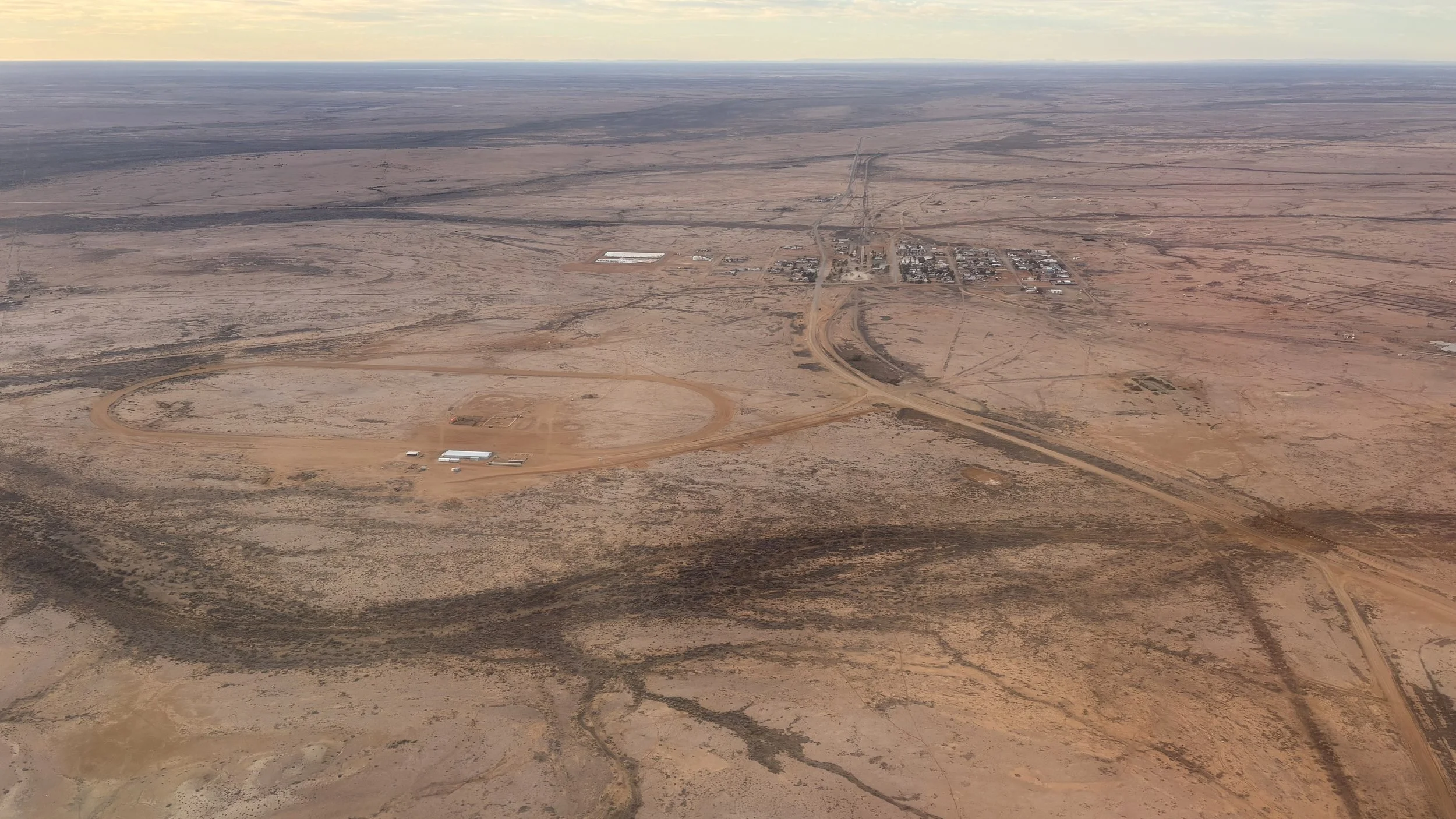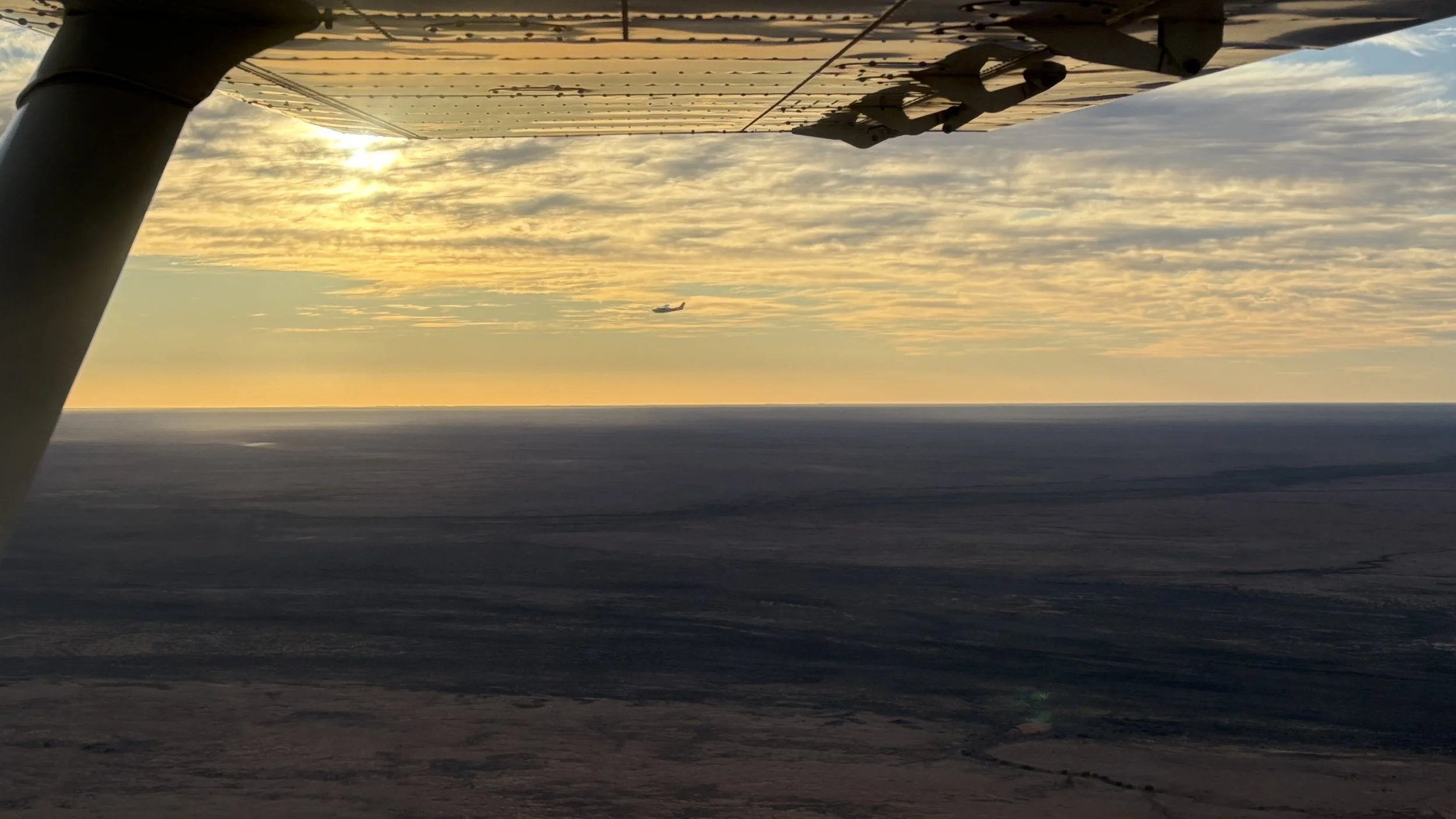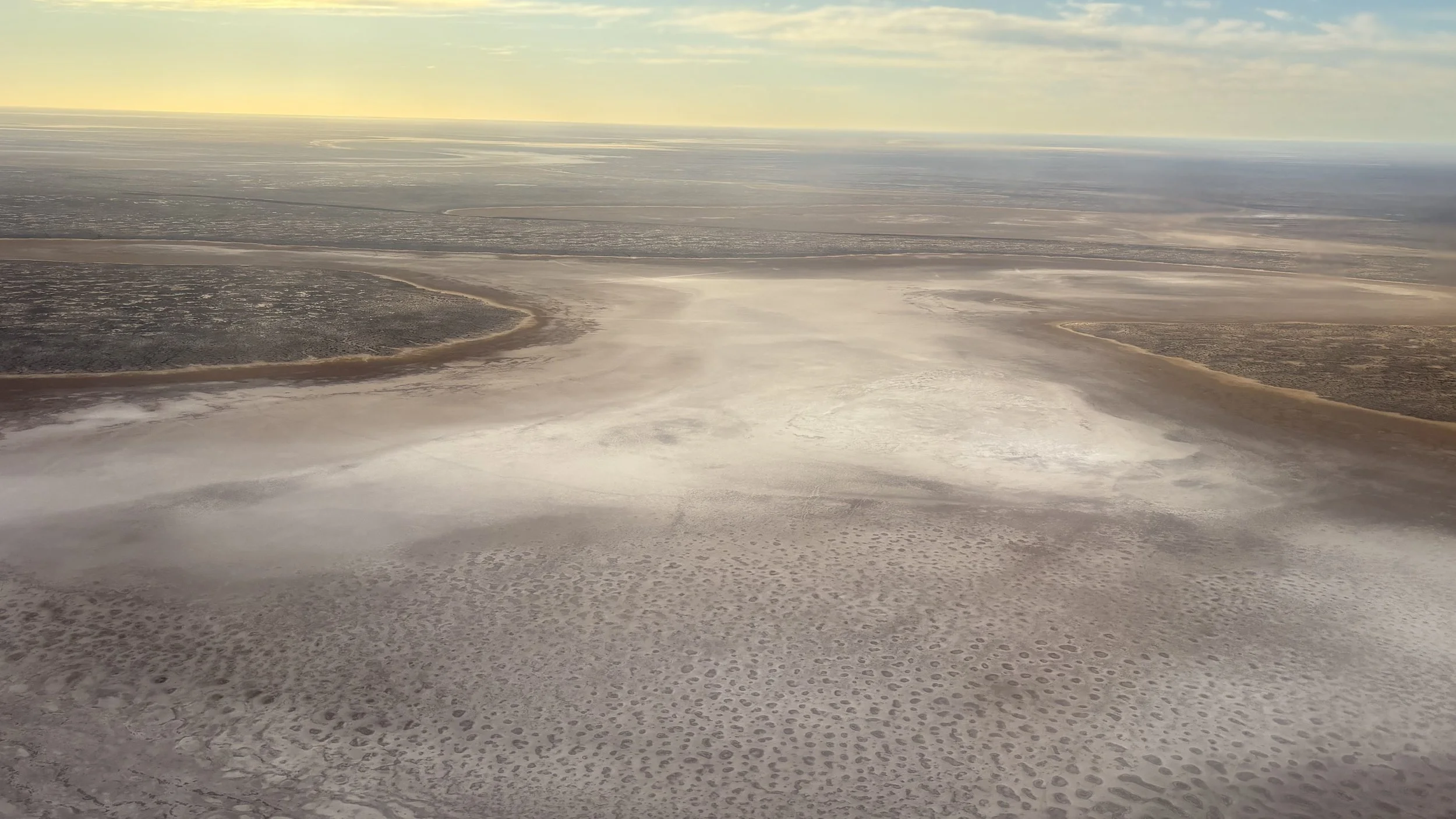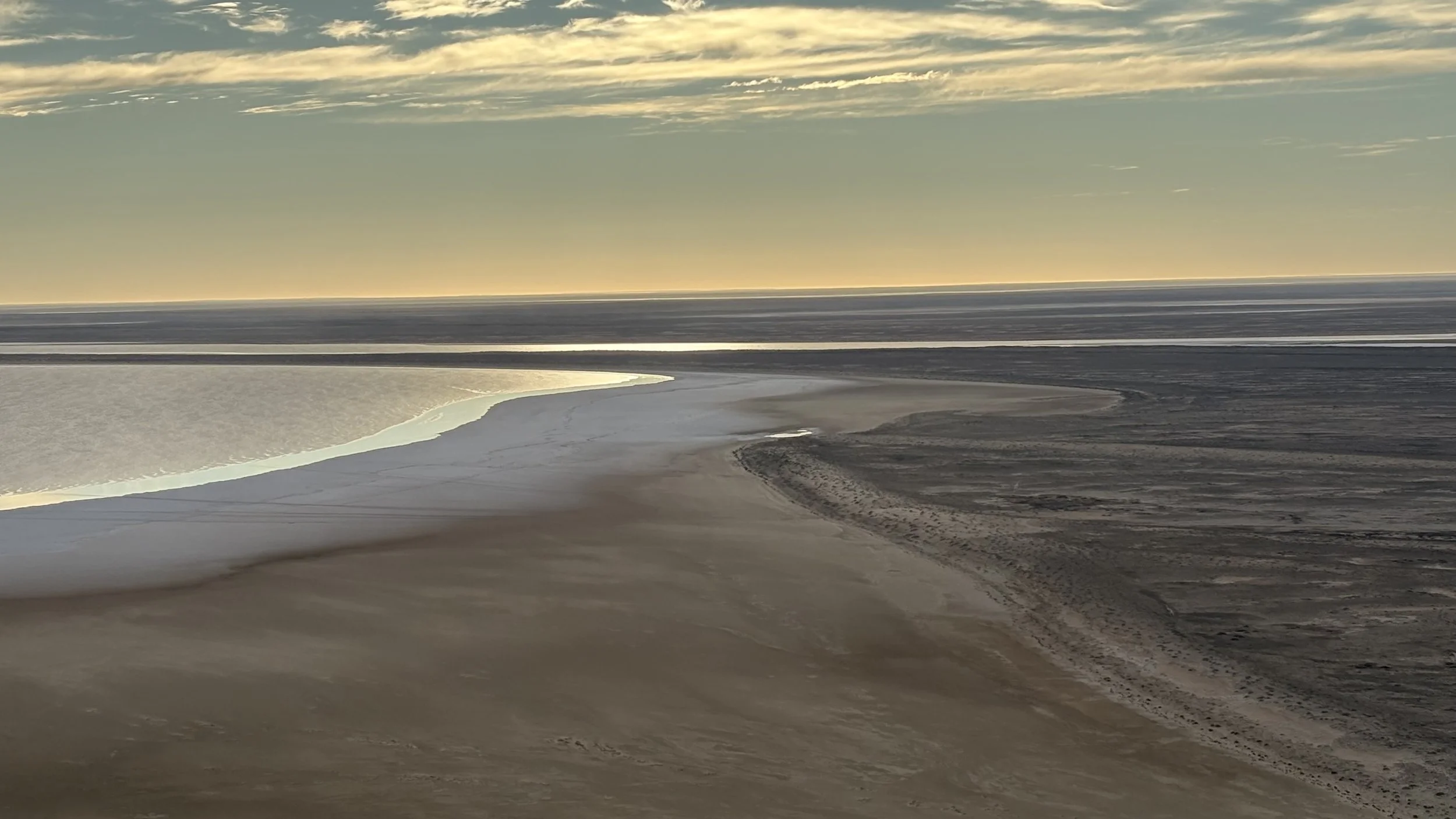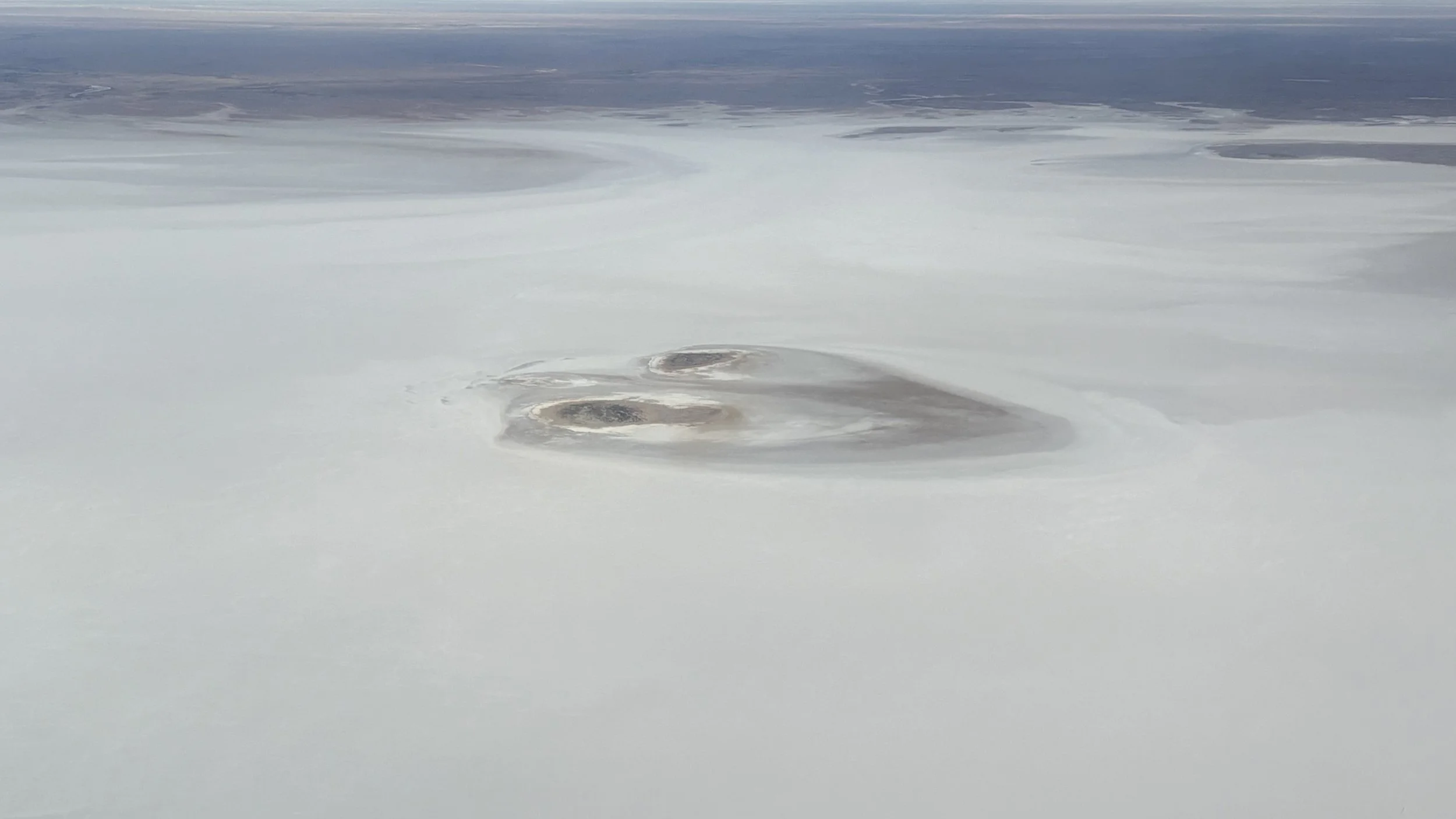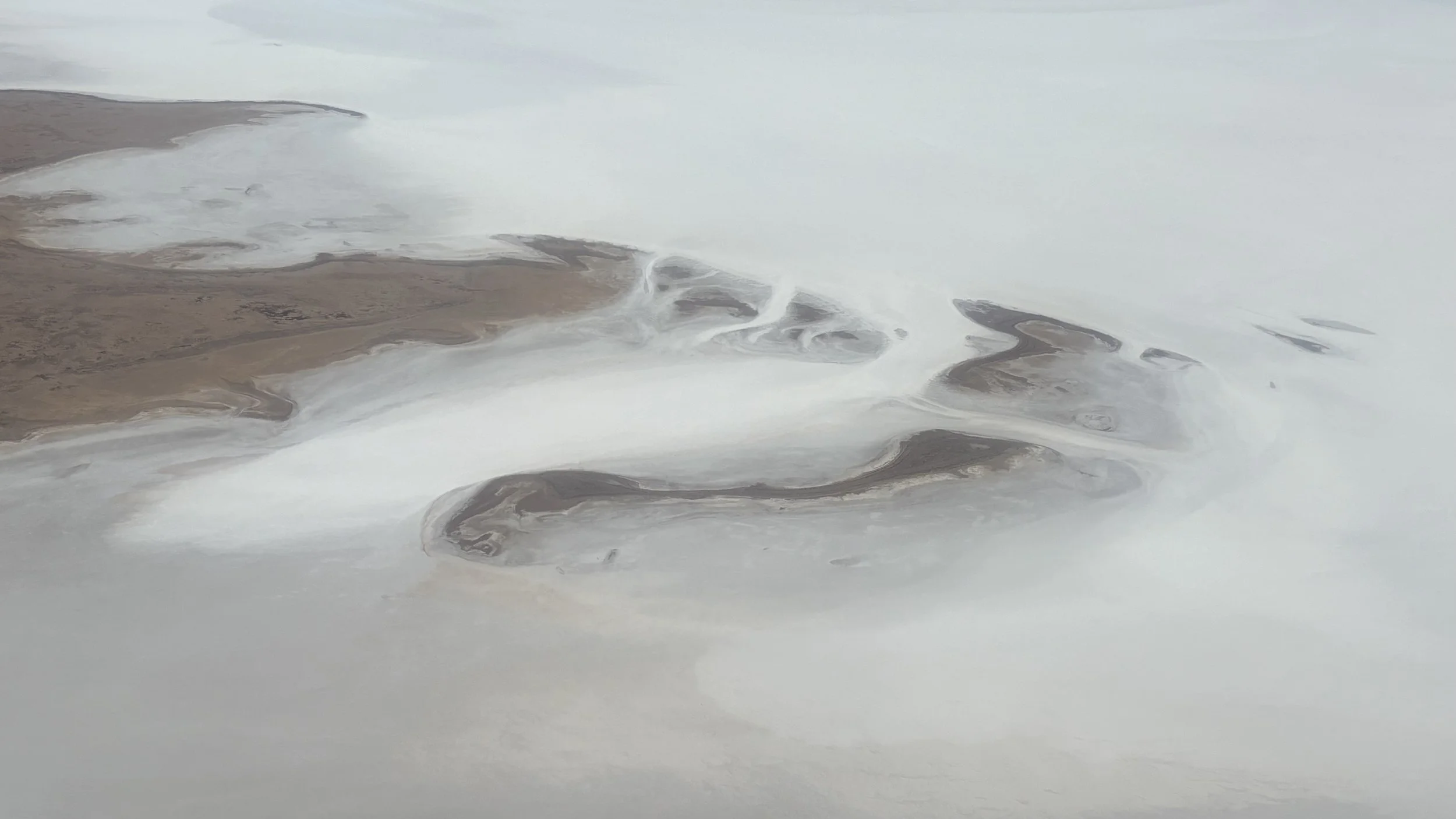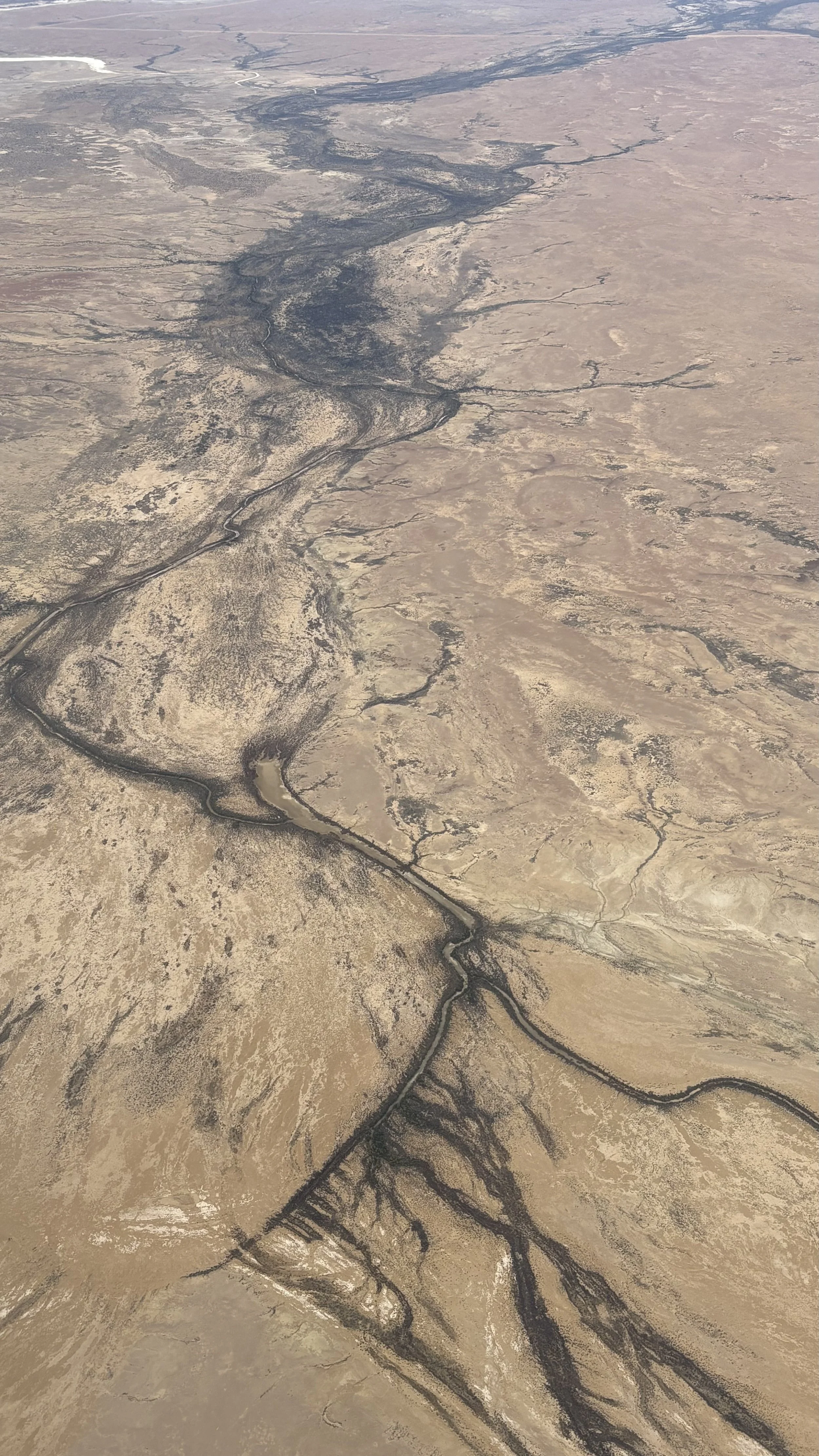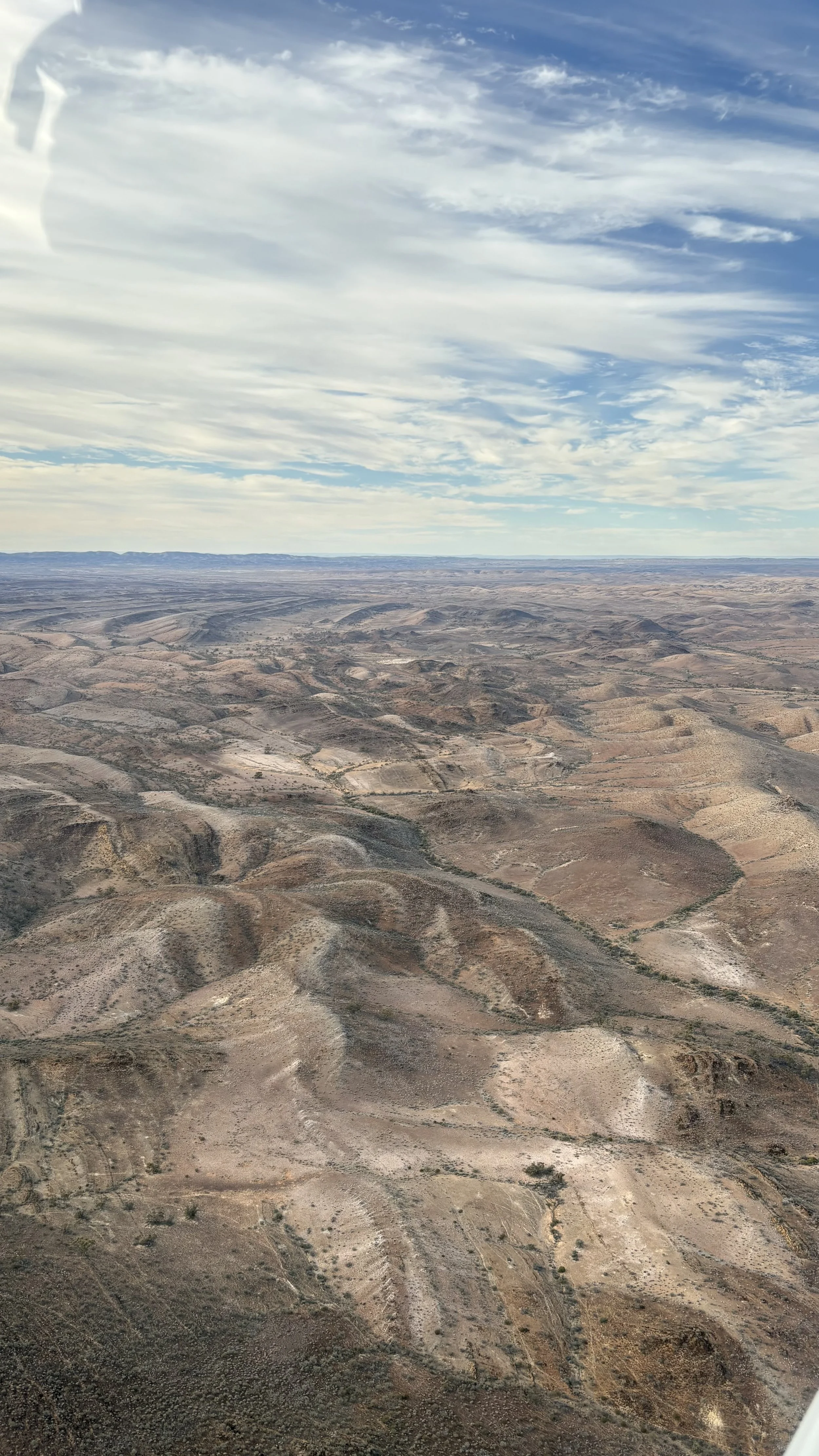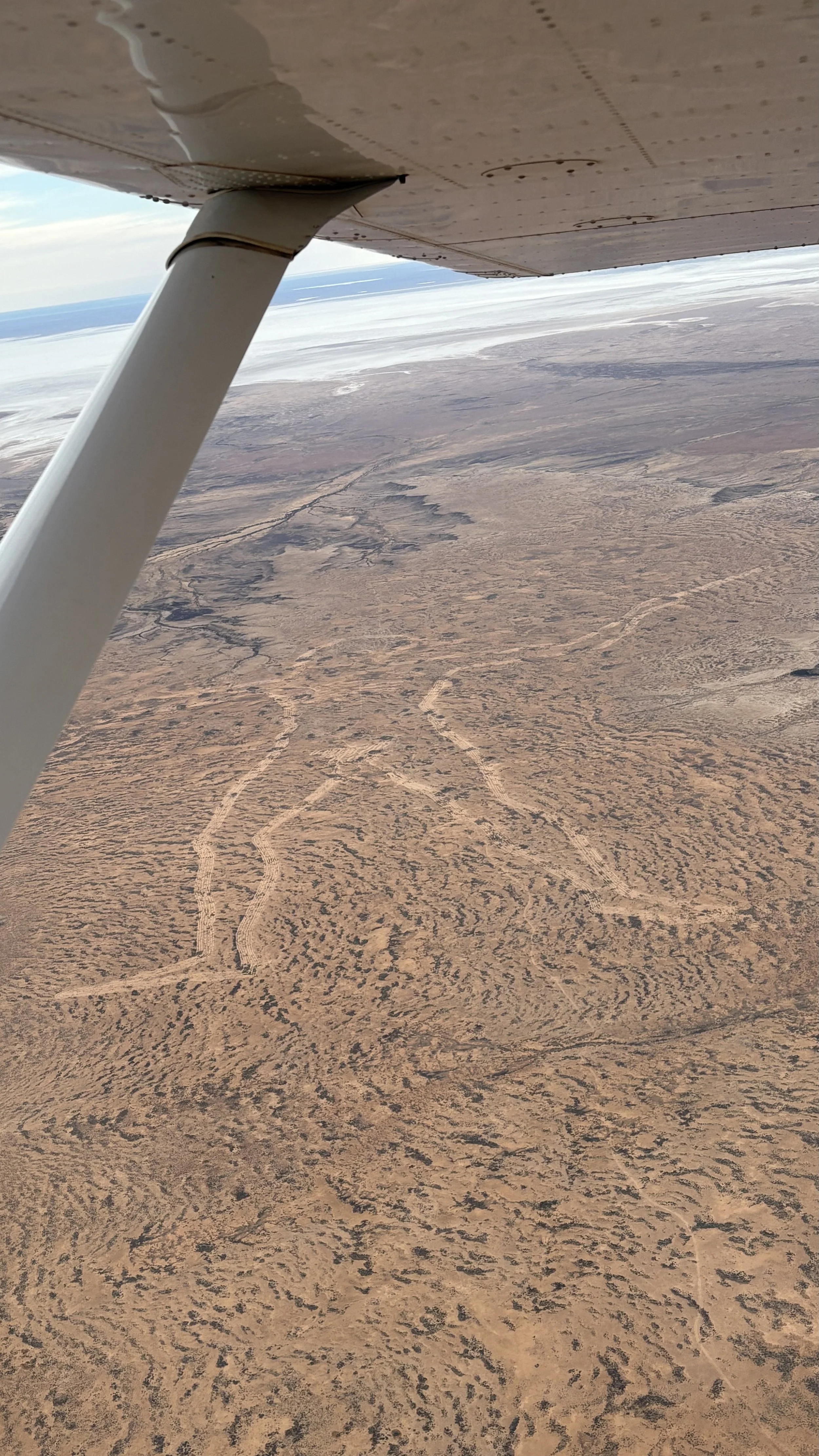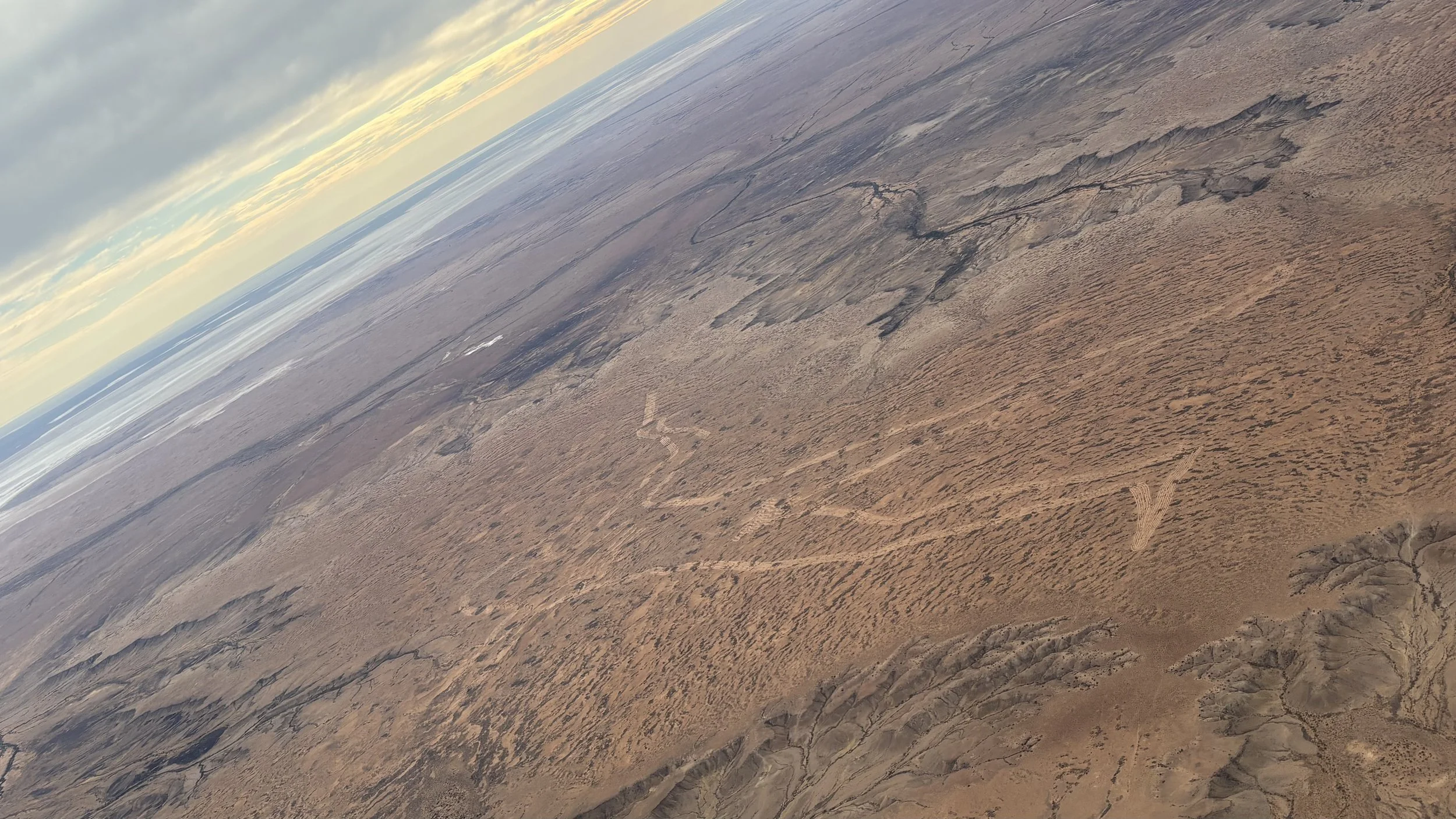Week 23 desert country and a flight over Kati Thanda—Lake Eyre
One of the questions at the start of my second job interview was about our trip, what has been the highlight? Just one? I don’t think I could narrow it to three!
We’ve spent a lot of time reflecting on highlights and lowlights, surprises, disappointments and delights. This time has been both revelatory and transformative.
Back home on the east coast things are different. I remember Louise, a good friend who lived in Darwin for years, reflecting with me a few years back about how the ‘east’ has little concept of life in the Territory, for First Nations people and the struggles that many people encounter.
I am definitely in this category, one of those in the east who has had little understanding of the Top End. Fran and Craig, also from Darwin, said much the same thing. They introduced me to the concept of the Berrimah Line, an invisible line that divides the NT in two, those with and those without.
This has been my learning, seeing the real-life differences between here and home.
It seems that there are two countries in Australia.
In these arid, beautiful landscapes which stand in stark contrast to the lush green of the east coast, having contact with our First Nations people on country, to see the plants and land formations they paint, to see the interactions (or not) between white and black and brown, I have seen first hand the tragedy of having left an entire group of people behind. A travesty in progress.
It’s a question I can’t shake, how has Australia let this happen?
Travelling down from the Northern Territory into South Australia we are going through desert regions such as the Tanami and Great Sandy Deserts. We drive past several Aboriginal Communities, generally off the main track, including Yeundumu the week of the coronial inquest findings into Kumanjayi Walker’s death here. He was shot in 2019 by NT police officer Zachary Rolfe.
Now in SA, the Painted Desert is our first stop and it’s a spectacularly painterly place. The hues on the ridgelines and spurs that fall to the plain below blend from deep yellows to reds to pinks and browns. The hills light up in the afternoon and morning. We’re fortunate to have clouds and we watch the light change as shadows travel across the landscape.
We take a walk up one of the jump-ups to enjoy the endless space, the uninterrupted views to the horizon.
We’re contending with a lot of flies here during the day. Reading an ABC article, I learn that they thrive in warmer temperatures and breed well following a wet period with lots of animal poop on the ground but they can’t survive with temps below 15 degrees. They can also be blown in high winds up to 300 km! While temperatures in the evenings are cooling off, daytime temperatures are still a pleasant 20 or so degrees.
The Oodnadatta Track takes us from Painted Desert Road towards Kati Thanda–Lake Eyre. I’m loving driving down some of Australia’s iconic 4WD tracks: Gibb, Tanemi, Oodnadatta, leaving us others like the Canning Stock Route, Birdsville and Gunnbarrel to do another time.
I’ve always wanted to see Kati Thanda–Lake Eyre and now it’s so close. We spend a night at the William Creek campground and enjoy a goat curry at the pub before going to Halligan Bay campground on the lake, down 60 km of corrugated track with some pretty hairy corners. At a quiet moment between groups of tourists, we get some helpful information from Diane behind the bar, including the state of the roads and where those nasty corners are.
We‘re hoping to see birdlife which comes to the lake when there is water and this year there’s some speculation that it may completely fill.
We don’t see many birds, however, other than a few seagulls but the water is still coming in, slowly making its way down past Cooper Creek. It has been so wet this year that the Birdsville Track has been closed in sections for months.
Our visit to the lake culminates in a flight from the next town Marree which gives us a sense of the lake’s scale and its 9000 square kilometre size. The morning is brisk with some interesting clouds in the sky. It’s another spectacle, with a fascinating combination of salt pans, expanses water, beautiful rock and range formations.
We also see the Marree Man, a huge geoglyph that has been etched into the earth but nobody knows who did it. It’s the image of an Aboriginal man with a hunting implement, 4.2 kilometres long and 28 kilometres around the circumference, discovered in 1998. Our pilot is leaning towards the theory that NASA may have made it.
We camp beside a guy who is also doing a flight the following morning before heading up the Oodnadatta Track to the Kati Thanda-Lake Eyre lookout, in a two-wheel drive. In a Mazda 2. I can’t quite believe it as this track (and the Gibb and Tanami and others we’ve driven) are not only remote but tough on the car. My cousin, Trish, lives out of Armidale and I have punctured two of my Subaru tyres in one weekend on that dirt road. A hardy, all-terrain tyre makes a huge difference driving on these outback roads.
This guy is in a two-wheel drive with narrow road tyres. I suggest he might want to reconsider. I call Jeremy over and he says the same thing.
‘That’s ok. I'm hoping for the best,’ he tells us again.
Kind of crazy, quite honestly.
Later, I post on the Oodnadatta Facebook page to see if he made it to Roxby Downs in one piece. He replies that the only issue was the ‘undercarriage cover of the car showing signs of falling off…’ A lucky escape.
By the way, I accepted a 12 month contract at a school in Sydney this week. Now all we need is a place to live!
